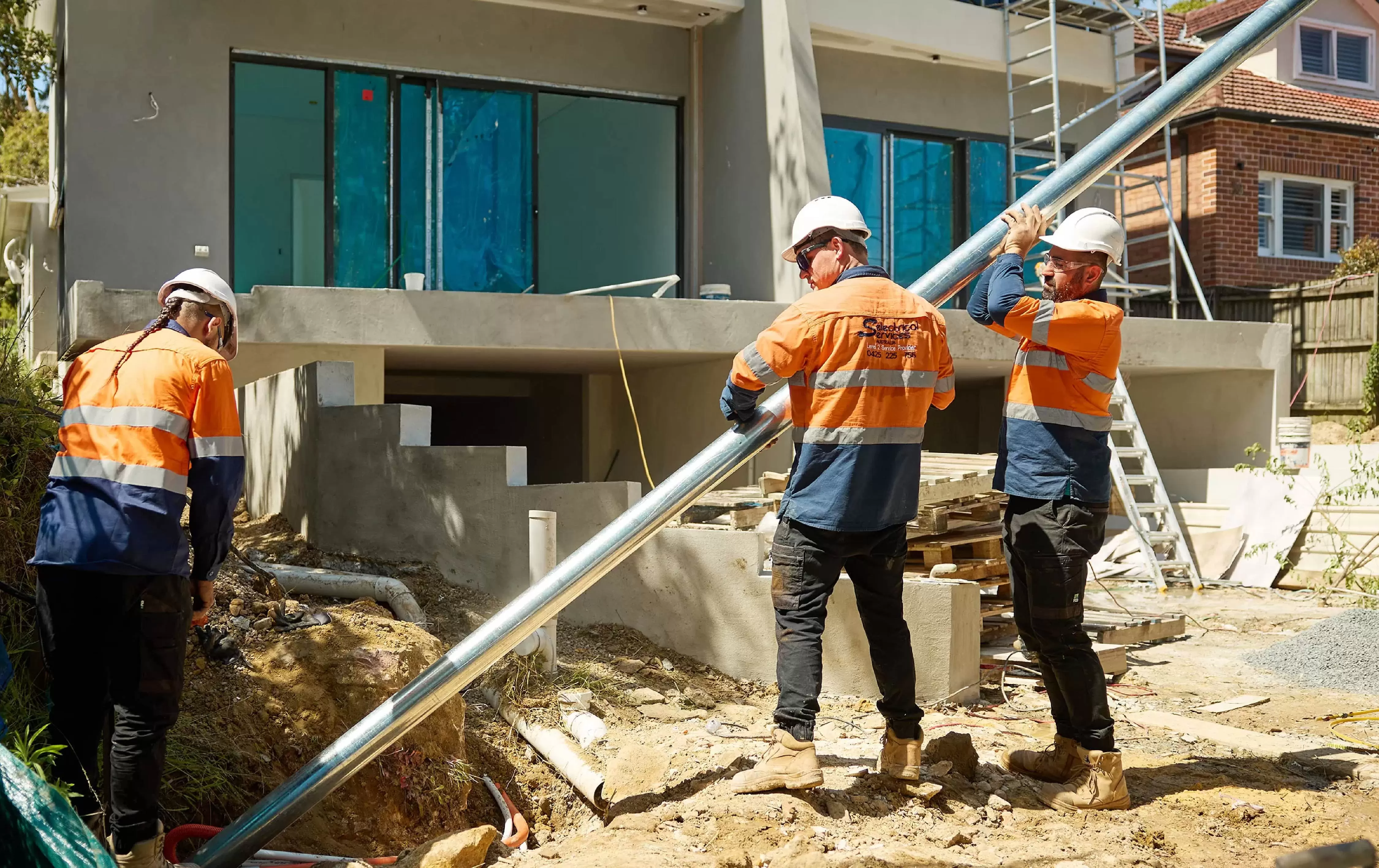News & Resources
When it comes to powering your home, the type of connection you choose between the street and your switchboard can have long-term implications. In NSW, most properties are connected via either overhead or underground power lines. While both serve the same function, the installation, aesthetics, cost, and maintenance can vary considerably.
Understanding the pros and cons of each option will help you choose the best solution for your home or building site, and ensure you remain compliant with your energy provider and NSW safety regulations.
Overhead Power Lines Explained
Overhead power lines are visible cables that run above ground, typically supported by timber or steel poles. These lines connect your property to the local distribution network, often via a private power pole on your land.
They remain common throughout suburban, rural, and regional areas due to their ease of access and lower installation costs. In most cases, they’re faster and less invasive to install, particularly on properties with existing poles or limited trenching access.
That said, being exposed means they are more vulnerable to environmental wear. Weather, falling branches, and UV damage can all reduce the life span of overhead connections, especially if regular maintenance isn’t carried out.
What Are Underground Power Lines?
Underground cabling involves running the electrical connection below ground through a protective conduit. The cable is trenched from the street pit or distribution point to your switchboard or meter box.
This option is increasingly popular in new estates and higher-end homes where visual impact and long-term protection are priorities. It also suits bushfire-prone areas or properties with extensive landscaping that would otherwise be disrupted by poles and cables.
Underground lines are less exposed to wind, weather, and debris, but repairs can be more complex, requiring excavation to access faults. They also tend to be more expensive upfront due to the need for trenching, conduit, and inspections.
Safety and Compliance
From a safety standpoint, both systems are compliant and reliable when installed by a licensed Level 2 Accredited Service Provider (ASP). However, the risk profile varies:
- Overhead systems require more frequent inspection due to UV damage, sagging cables, or tree interference.
- Underground systems are better protected but harder to access in emergencies or outages.
Local energy distributors such as Ausgrid or Endeavour Energy may have guidelines on which system is preferred or required based on zoning and infrastructure availability.
A qualified Level 2 ASP will ensure your installation meets all NSW electrical safety and service requirements.
Installation Costs: A Realistic Comparison
Cost is one of the biggest differentiators between the two systems.
Overhead lines are generally more affordable to install, particularly if poles already exist on or near the property. Underground systems, on the other hand, require excavation, conduit, and backfilling, all of which add time and expense.
While prices vary depending on site access, distance from the main connection point, and soil conditions, typical installation costs are as follows:
- Overhead connection: $1,500 – $3,500
- Underground connection: $3,500 – $7,000+
Keep in mind these figures are estimates and may not include additional costs for trenching under driveways, engaging surveyors, or obtaining council approvals.
Choosing the Right Option for Your Home
Several factors will determine the best connection type for your property:
Your existing infrastructure may limit your options. For example, rural properties with long distances from the main road may be more suited to overhead lines, while new homes in modern subdivisions may be pre-approved for underground connections.
The decision may also depend on local council preferences, fire risk zones, and even aesthetic goals, underground lines are preferred for properties where visual clutter is a concern.
It’s also important to consider future access. Overhead systems are easy to inspect and maintain, while underground systems offer longer-term resilience but can be more difficult to service if faults occur.
Council and Regulatory Considerations
In NSW, any new electrical connection must be carried out by a Level 2 ASP and comply with your energy distributor’s network standards.
Underground connections typically require:
- Council or local development approval
- “Dial Before You Dig” clearance
- Trenching diagrams and access coordination
Overhead connections may also need approval if new poles are being installed or if modifications to the existing service are required. Your Level 2 electrician will manage these approvals as part of the service.
Our Recommendation
If you’re looking for a quick, affordable solution or already have pole infrastructure, an overhead connection is likely the better option. But if your property is in a high-risk zone, aesthetics matter, or you’re building a long-term family home, underground is well worth the investment.
Either way, make sure your installation is handled by a licensed Level 2 electrician with local experience and full compliance knowledge.
Thinking About Upgrading?
Depending on your setup, an older meter box may also require a switchboard upgrade to handle the demands of a modern power connection, especially if you’re switching from overhead to underground.
For overhead systems, it’s common to install a private power pole to meet safety clearances and give you better control over the connection point on your property.
Before any excavation begins, be sure to contact Dial Before You Dig to avoid damaging existing underground services.






